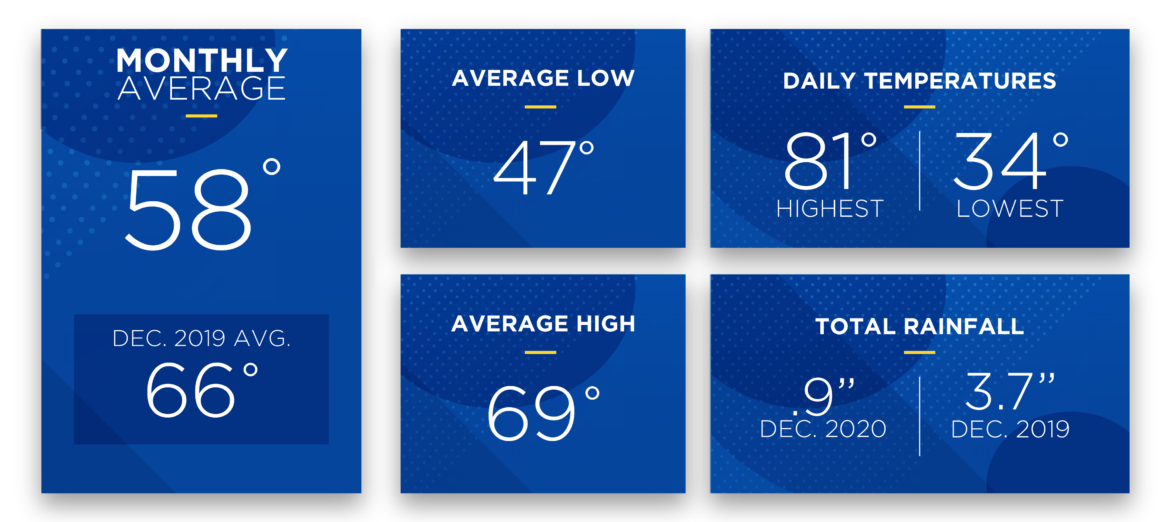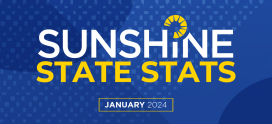
Sunshine State Stats December 2020
Happy New Year! There was no white Christmas in Florida for December 2020, but the temperatures were chilly dipping into the low 30s. Central Florida closed out 2020 with sun, cool morning temperatures and lower than average rainfall for December.

For December 2020 the average temperature was a cool 58 degrees, which 8 degrees lower than the average temperature of 66 degrees in December 2019. Thus, electric usage in December may be higher than last year due to heating needs. Two days in the month reached 80 degrees or over, while 5 days dipped into the 30s. The highest recorded temperature was 81 degrees and the lowest recorded temperature was 34 degrees. The average high temperature was 69 degrees and the average low temperature was 47 degrees.
Rainfall was lower than average at only .9 inches for the month. In December 2019, rainfall measured 3.7 inches.
Again, members may see an increase in their energy usage for December 2020. With temperatures fluctuating between low 80s and high 70s to 30s and 40s at night and in the early morning hours, members used their HVACs to cool during the day and for heat after the sun went down.
January forecast:
The January 2021 forecast calls for cool temperatures with highs in the 60s and lows in the 30s and 40s. Expect plenty of sunny days with the best chance of rain during the second week of the month.
According to The Old Farmer’s Almanac, winter and spring in Florida will be gorgeous! Expect normal precipitation and an average temperature of 58 – only 2 degrees below average in January. The average temperature is forecast at 4 degrees above average at 65 in February, with below-average rainfall expected. March is forecast to be warm with an average temperature of 69, which is 2 degrees above average, and rainfall is forecast to be slightly below average.
When was the last time your HVAC was serviced? If it’s been more than 6 months, consider scheduling an HVAC tune-up. Regular maintenance helps your unit run more efficiently, increases the unit’s lifespan and can diagnose small issues before they become bigger problems.
To check historical usage, log into SmartHub to view past bills and consumption charts. If your usage is high, SECO offers several energy-efficiency tools to help you identify energy wasters. Take the Home Energy Assessment to receive a detailed email tailored to your home’s features and lifestyle. The energy-saving advice will provide low-cost ways to decrease your usage – and your electric bill.
To easily calculate how much energy your appliances, lighting, electronic devices, and other energy-using items in your home consume, use the Energy Estimator.




